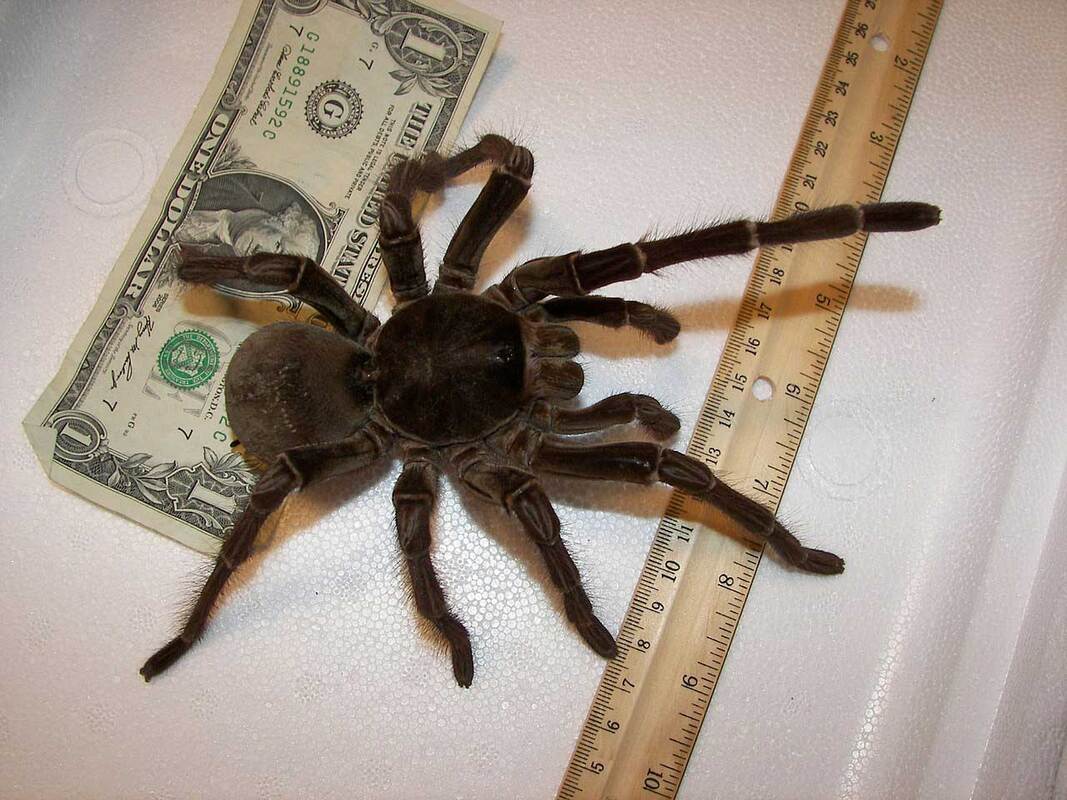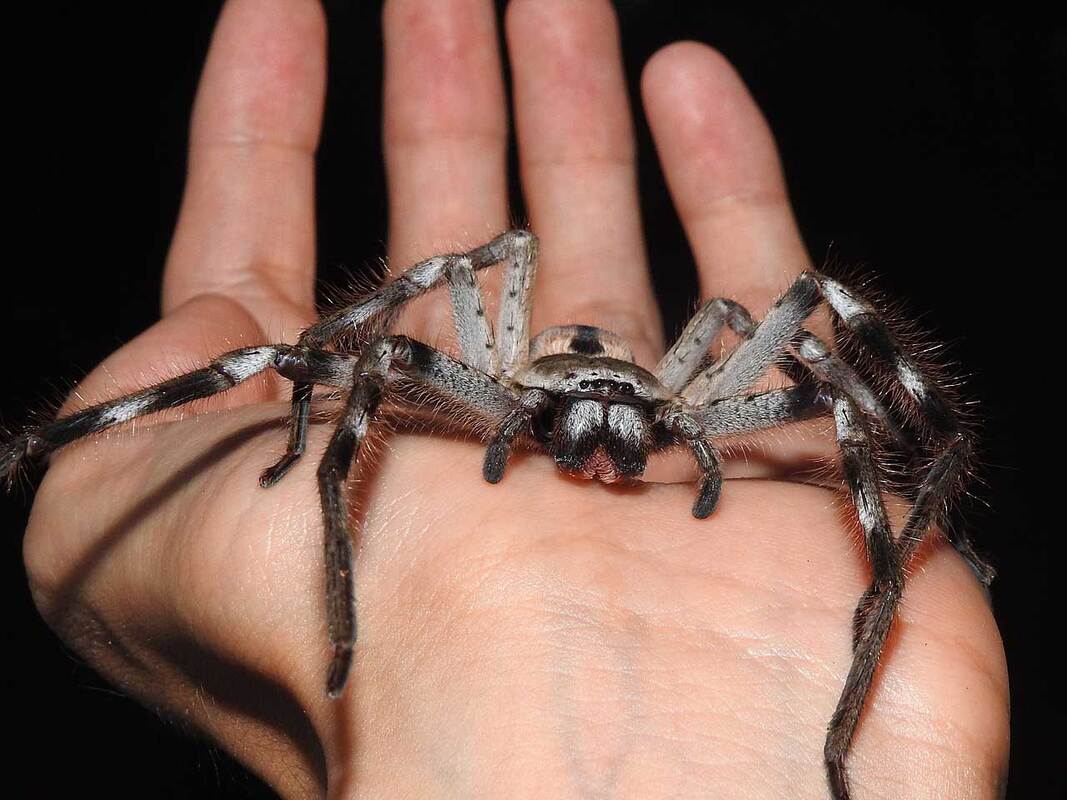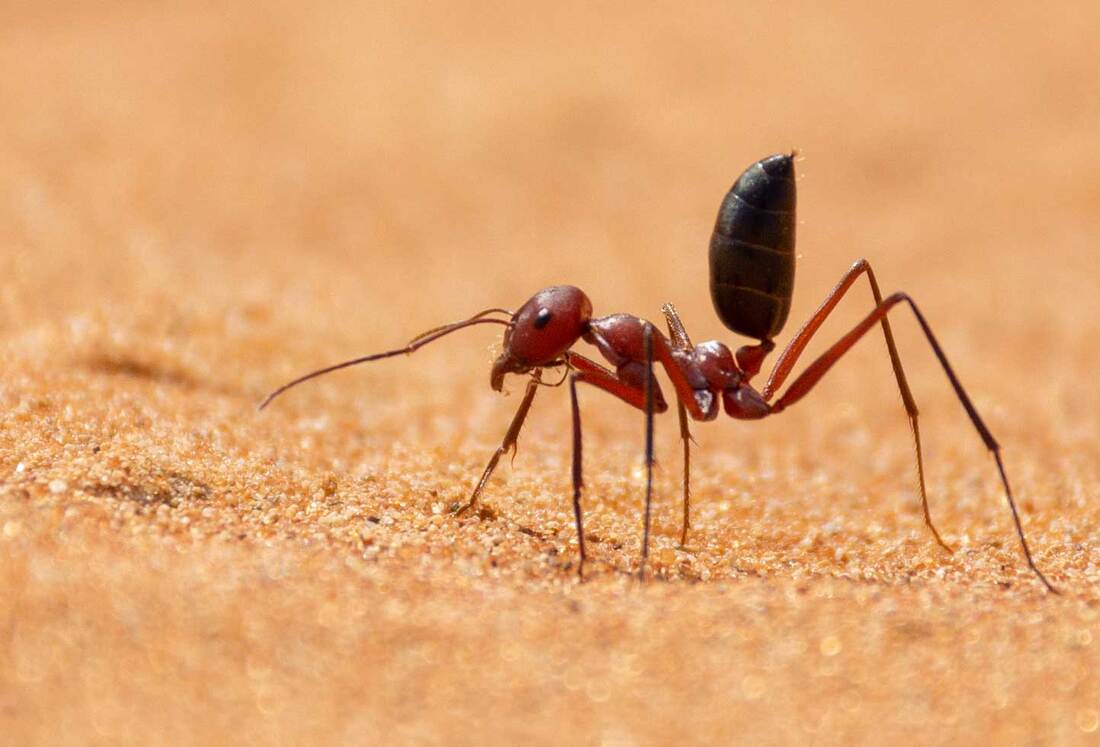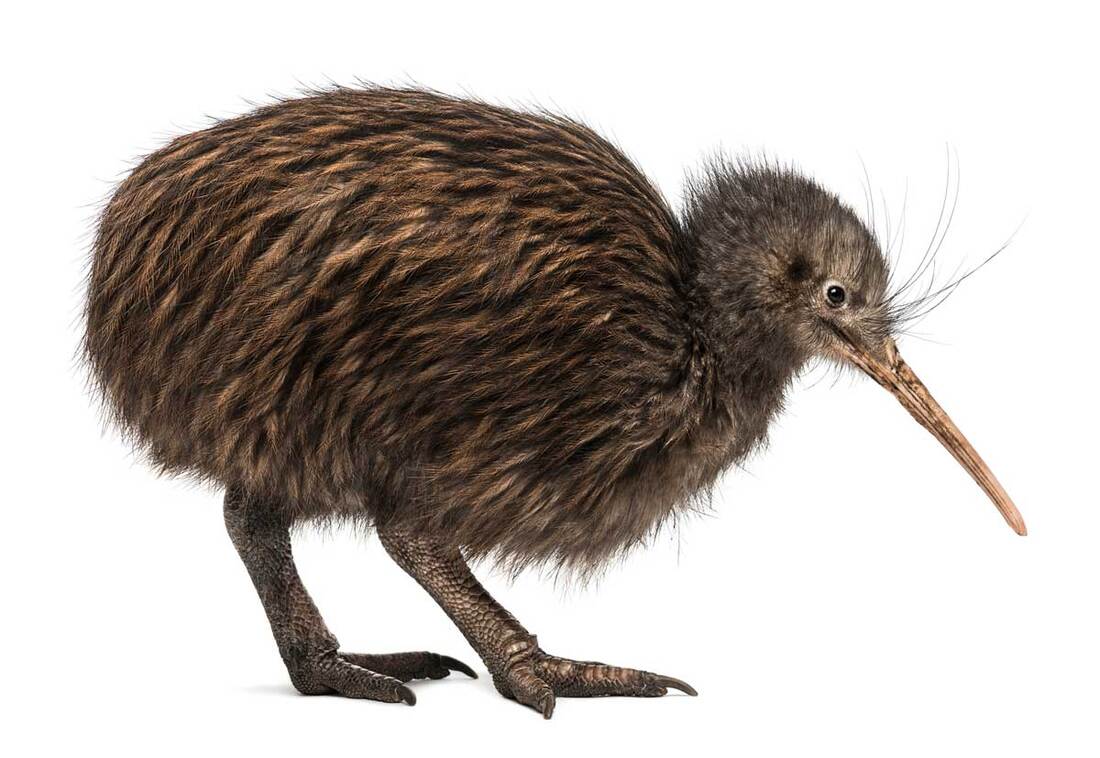|
Did you know two different spider species tie for the honor of being the world's largest spider? They are the Goliath birdeater and the giant huntsman spider. Why do I say these two spiders tie for first place? Let's look at the details. The Goliath birdeater, found in South America, can have a leg span of 12 inches (30 cm), and so can the giant huntsman. But... the giant huntsman, found in Laos, reaches this size more often. Therefore, on average, the giant huntsman is bigger. The giant huntsman is the clear winner, right? Not really. You have to also consider weight. The giant huntsman weighs up to 167 grams, but the Goliath birdeater weighs up to 175 grams. So, I proclaim (unofficially) that both of these spiders are the winners. Because... well, I do not want any spider that is a foot long to be upset with me. Let's consider each species. The Goliath birdeater (first photo below) is a type of tarantula. Does this spider really eat birds? They can, but they rarely do because birds are more difficult to catch than other prey. The name birdeater originated in the 1700s, from a copper engraving done by a German naturalist and illustrator who depicted one of these spiders feasting on a hummingbird. In reality, hummingbirds are really fast and hard to catch. But Goliath birdeaters are certainly big enough to eat small birds, rodents, frogs, lizards, and invertebrates. The giant huntsman spider is in the huntsman family instead of the tarantula family, with a relatively smaller body size but longer legs. The giant huntsman wasn't discovered until 2001, when a German naturalist found one in a cave in Laos (I guess there are a lot of German spider experts...?). These huge spiders can move really fast, about one meter per second. This helps them run down their prey, which they kill by envenomation. See the second photo below. There you have it... two world champion spiders. Photo Credits: - Goliath birdeater - Snakecollector, CC BY 2.0, via Wikimedia Commons - Giant huntsman spider - Jackson Nugent, CC BY 2.0, via Wikimedia Commons
0 Comments
I’ve been going to the Boundary Waters Canoe Area Wilderness since 1986 (and going there with Trish since 1992). Part of the appeal is the hardships involved with a true wilderness experience: portaging your canoe and gear from one lake to the next, cooking meals with minimal equipment, trying to stay dry when the rains come, and keeping the insects from sucking all the blood from your body, to name a few. Dealing with these hardships properly results in an ego boost. They make me feel like I’m Jeremiah Johnson, or at least a version of Jeremiah Johnson who enjoys comfy air mattresses and high-tech footwear.
There is, however, one hardship in the Boundary Waters I do not appreciate, and that hardship is becoming more bothersome as I get older. I’m talking, of course, about the need to crawl out of the tent in the middle of the night to urinate. There, I said it. To pee, to wizz, to take a leak, to micturate. It’s just not fun. There’s all that moaning and groaning to unzip the sleeping bag, trying to put on a pair of wet shoes, unzipping the tent and then zipping it back up to keep the mosquitoes out of the tent, stumbling over rocks and tent cords to move far enough away from the tent, finding a spot where the ground slopes away from your feet so the urine does not flow back onto your shoes (or bare feet), getting the job done while slapping mosquitoes, stumbling back to the tent, unzipping then rezipping the tent door, crawling back into the sleeping bag, turning on a flashlight and methodically killing the mosquitoes that got in during the process, then trying to go back to sleep. There was a time when I could go all night without doing that. Those days are long gone. Now I have to go through it at least two times per night, sometimes more. The Great Mystery is, why? My first thought was, this happens to those of us who were troublemakers in our younger days. But I know people who I’m quite sure are 'practically perfect in every way' who still have to pee at night as much as I do. As it turns out, it is not unusual at all. As we age, our bodies produce less of a hormone that helps concentrate urine so that we can hold it until the morning. Also, as we get older, we are likely to have other health issues that make it harder to hold it until morning, such as an enlarged prostate gland (in men) and lowered estrogen (in women), which causes changes in the urinary tract. There are plenty of other things that can cause it too. Bummer. Unfair. But, Trish and I are still going to the Boundary Waters. Did you know the Saharan silver ant is one of the fastest animals on Earth? It also has some of the most fascinating adaptations to extreme heat. As it turns out, these two capabilities are intricately connected.
As the name suggests, the Saharan silver ant lives in the Sahara Desert of northern Africa. The Sahara Desert is hot. How hot? As the hottest desert in the world, the Sahara can get up to 136º F (58º C). Typical daytime temperatures are around 117º F (47º C). As you can imagine, the sand gets even hotter. So, it makes sense that silver ants would spend as little time out in the daytime heat as possible and as little time touching the hot sand as possible. They could just leave their burrows at night or in the cool morning to gather food, like many other desert animals do. But that's when countless ant-eating lizards are on the prowl. So, silver ants wait until it's so hot that even the ant-eating lizards can't stand it, and the lizards retreat below ground. BUT... when the temperature reaches the lethal level for the lizards, there is only about ten more minutes before it reaches the lethal level for the ants. Therefore, the ants only have about ten minutes each day to leave their burrows to scavenge for insects and other animals that have died from the heat. TEN MINUTES per day! This leads us to why the ants are so fast. They need to really boogie to find dead animals and drag them back into their burrows within ten minutes. So, they lift their front pair of legs off the ground and run at blistering speeds on only four legs. Quadrupedal ants... that's weird. But it reduces the ants' contact with the hot sand. How fast can they run? Up to 108 times their own body length per second. Using this standard, only two other animals are faster, the Australian tiger beetle (171 body lengths per second) and the California coastal mite (377 body lengths). What about the cheetah? Sorry, cheetahs can only run 16 body lengths per second. Consider this: If I could run as fast as a silver ant (108 lengths of my body per second), my sprinting speed would be 368 miles per hour (592 km/hr). We all seem to know this, starting at birth. We like to be held and touched by those we care about. Dogs know this. Cats might know this. It doesn’t even have to be with your own species. People like cuddling with dogs and cats. Sometimes, cats and dogs even cuddle with each other—what is the world coming to?! Holding hands is good. Snuggling in bed is good, even when we are asleep and unaware we are snuggling… it’s still good. Playing footsie is good. And hugs are good, unless you’re a politician, then people of the opposing party will label you as creepy.
I seem to be addicted to hugs and handholding with Trish. It is almost as if I need a certain number of hugs each day to keep me in balance. We hold hands when we are traveling in the car or watching a movie. And lots of other people are like us. Think of all the little cooties and bacteria gleefully leaping from one person to the next. Yet, most people still crave such contact. Weird. As it turns out, there is more to this than our desire to diversify our own cootie communities. The most obvious effect of hugs is due to this type of touch being a form of communication. Someone you care about is intentionally signaling to you that they care about you. That’s good. There is plenty of research showing that being touched in a loving and caring way not only decreases stress but also helps the recipient heal, recover, and grow. It’s a psychological thing. There is also a biological aspect—hugs release oxytocin, which is often called the cuddle hormone. It's released when we cuddle or bond, and it helps us relax. There you have it. Hug your loved ones. Hug strangers if you so desire. The world needs more hugs. Did you know the kiwi (the bird, not the fruit) has really strong, muscular legs that make up a third of the bird's weight?
Kiwis are chicken-sized flightless birds that live only in New Zealand. Kiwis are ratites, along with emus, ostriches, cassowaries, and rheas. There are five living kiwi species. Of course, without functional wings for flight, kiwis rely on their legs for moving around and escaping danger, but they also use their legs to kick logs apart to find the bugs inside, which they like to eat. They can deliver a wicked kick and run off possums that are trying to attack and eat their chicks. Male kiwis are territorial, and they often get into fierce fights with other male intruders, sometimes even resulting in injury or death. They even use their powerful legs and claws to dig the burrows in which they live. Although a kiwi looks rather like a fat, furry pear, it can outrun a human. In addition to tearing apart logs, kiwis hunt for bugs and worms by walking quietly through the forest at night (they are nocturnal) and tapping the ground with their sensitive beak. They are the only birds that have nostrils at the very end of their beak. When they detect a bug or worm under the surface, they jab their beak into the soil and pluck it out. |
Stan's Cogitations
Everyone needs a creative outlet. That's why I write. Archives
July 2024
|







 RSS Feed
RSS Feed